“N͜҉Ǫ̴̵̨W̶̨͘͘͞“
“Blowout soon, fellow Stalker!”
“Oh really? When?”
“N͜҉Ǫ̴̵̨W̶̨͘͘͞“
More Posts from Othermanymore and Others
I'm pretty new here, and I don't actually know much about dinosaurs (just followed this blog because it seemed really cool and interesting) so could you explain what shrink-wrapped means?
Of course! See, modern animals have a lot of muscles, fat, fluff, etc, and end up looking very little like their actual skeleton. For example, look at how much fluff owls have:

(Source)
However, lots of palaeoartists completely ignore this! They basically stretch skin over the bones and call it a day. One especially bad example that was featured on @palaeofail is this poor pterosaur:

It barely has room for its digestive system. It’s definitely missing the air sac system that allows it to breathe. It’s got virtually no muscles on the arms - how does it fly?? - on the head (no wonder its mouth is open. It has no jaw muscles to close it!), on the torso (it needs to flap), or on the legs (walking) It doesn’t have any fat at all, so it’s definitely starving (maybe because it can’t fly or close its moth?). The skin is much too thin; you can see all of the bones and its wing membranes should be much, much thicker. And it’s missing the hair-like pycnofibres that should be covering its body!
Many palaeoartists have started to strike back at this by drawing modern animals like we might draw them if we found their bones:

(Source)
[House cat]


(Source)
How To Foreshadow

Foreshadowing is a necessary part of any well-executed story. And yet, despite all its prevalence and importance, it’s actually a concept that many authors have a hard time getting their minds around. If we sift foreshadowing down to its simplest form, we could say that it prepares readers for what will happen later in the story.
At first glance, this may seem counter-intuitive. Why would we want readers to know what’s going to happen later in the story? If they know how the book turns out, they’ll have no reason to read on.
True enough. So let me reiterate. The point of foreshadowing is to prepare readers for what happens later in the story. Not tell them,just prepare them.
Foreshadowing’s great strength lies in its ability to create a cohesive and plausible story. If readers understand that it’s possible that someone in your story may be murdered, they won’t be completely shocked when the sidekick gets axed down the road. If, however, you failed to properly foreshadow this unhappy event,readers would be jarred. They would feel you had cheated them out of the story they thought they were reading. They would think you had, in essence, lied to them so you could trick them with this big shocker.
Readers don’t like to be cheated, lied to, or tricked. And that’s where foreshadowing comes into play.
Foreshadowing, Part 1: The Plant
We can break foreshadowing down into two parts. The first is the plant. This is the part where you hint to readers that something surprising and/or important is going to happen later in the book. If the bad guy is going to kidnap the good guy’s son, your plant might be the moment when your hero notices a creepy dude hanging around the playground. If your heroine is going to be left standing at the altar, your plant might be her fiancé’s ambivalence toward the wedding preparations.
Depending on what you’re foreshadowing, the plant can be blatant or subtle. Subtle is almost always better, since you don’t want to giveaway your plot twists. But, at the same time, your hints have to be obvious enough that readers will remember them later on.
Usually, the earlier you can foreshadow an event, the stronger and more cohesive an effect you will create. The bigger the event, the more important it is to foreshadow it early. As editor Jeff Gerke puts it in The First 50 Pages:
Basically, you need to let us in on the rules. If the climax of your book is going to consist of getting into a time machine and jumping away to safety, we had better have known in the first fifty pages that time travel is possible in the world of your story.
Foreshadowing, Part 2: The Payoff
Once you’ve got your plant in place, all that’s left is to bringthe payoff on stage. If you planted hints about kidnapping, jilting, or time travelling, this is the part where you now get to let these important scenes play out.
As long as you’ve done your job right with the plant, you probably won’t even need to reference your hints from earlier. In fact, you’re likely to create a more solid effect by letting readers put the pieces together themselves.
But you’ll also find moments, usually of smaller events that were given less obvious plants, that will benefit from a quick reference to the original hint (e.g., “George,you big meanie! Now I understand why you wouldn’t choose between the scarlet and the crimson for the bridesmaids’ dresses!”)The most important thing to remember about the payoff is that it always needs to happen. If you plant hints, pay them off. Just as readers will be confused by an unforeshadowed plot twist, they’ll also be frustrated by foreshadowing that excites them and then leads nowhere.
Foreshadowing vs. Telegraphing
The trick to good foreshadowing is preparing your readers on a subconscious level for what’s coming without allowing them to guess the ins and outs of the plot twist. You don’t want your hints to be so obvious that they remove all suspense. In her October 2012 Writer’s Digest article “Making the Ordinary Menacing: 5 Ways,” Hallie Ephron calls this “telegraphing”:
When you insert a hint of what’s to come, look at it critically and decide whether it’s something the reader will glide right by but remember later with an Aha!That’s foreshadowing. If instead the reader groans and guesses what’s coming, you’v etelegraphed.
Some clever readers will undoubtedly be able to interpret your hints, no matter how cagey you are. But if you can fool most of the readers most of the time, you can’t ask for more than that.
Foreshadowing vs. Foreboding
Foreboding—that skin-prickling feeling that somethinghorrible is going to happen—can be a useful facet of foreshadowing. By itself, foreboding isn’t specific enough tobe foreshadowing. Unlike the plants used for foreshadowing, foreboding is just an ambiguous aura of suspense. Jordan E. Rosenfeld describes it in Make a Scene:
[F]oreshadowing … hints at actual plot events to come, [but]foreboding is purely about mood-setting. It heightens the feeling of tension in a scene but doesn’t necessarily indicate that something bad really will happen.
Foreboding is useful in setting readers’ emotions on edge without giving them any blatant hints. But when it comes time to foreshadow important events, always back up your foreboding by planting some specific clues.Most authors have so intrinsic an understanding of foreshadowing that they plant it and pay it off without even fully realizing that’s what they’re doing. But the better you understand the technique, the better you can wield it. Using this basic approach to foreshadowing, you can strengthen your story and your readers’ experience of it.
Source x

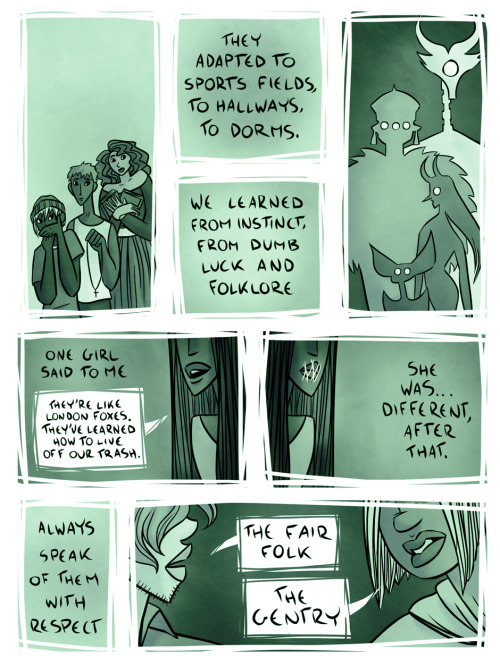
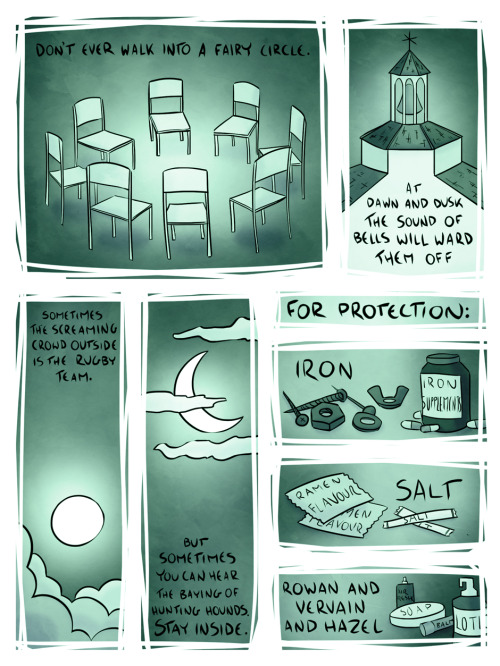
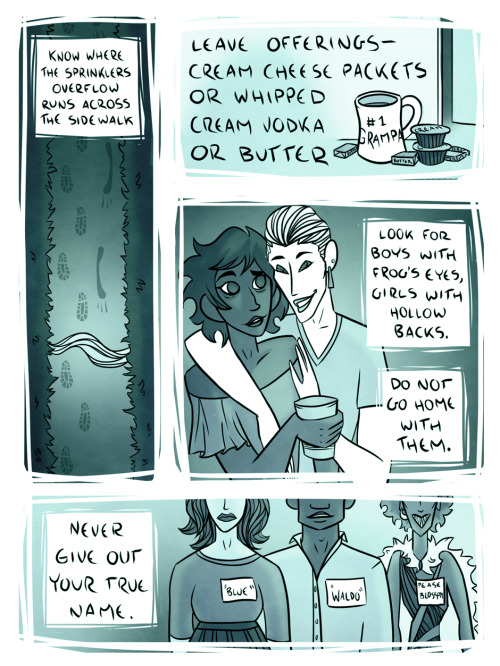


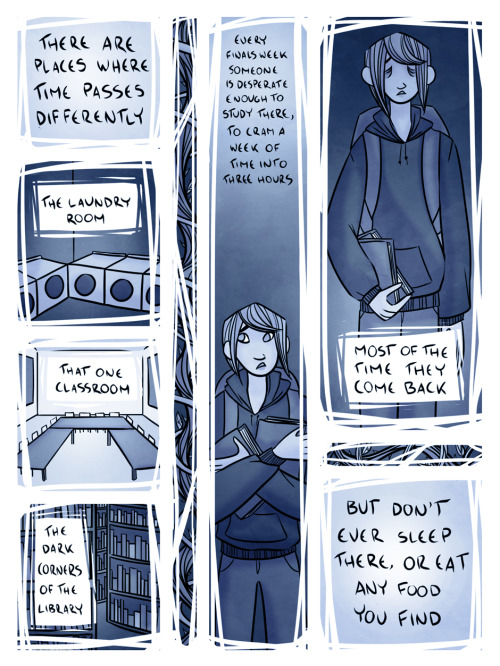

Coexisting With The Fair Folk Who Have Taken Up Residence In/Around/Beneath Your University: A How-To Guide
See more of my comics here, and my art here!
Whole bunch of lore/things I couldn’t fit/everything I love about the overlap in superstition and General College Weirdness below the cut-
Keep reading
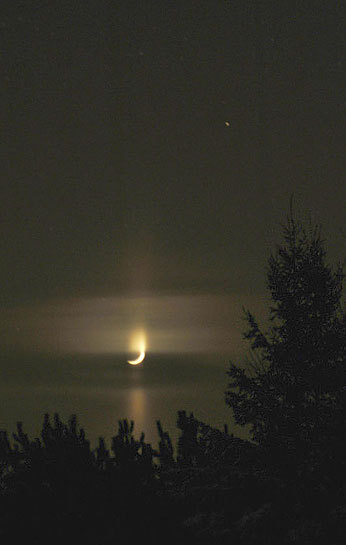

Moon pillars are a type of light pillar. Moon pillars occur when the Moon is low enough in the sky to be close to the horizon. The ice crystals involved are generally flat or columnated, allowing a vertical beam of light to reflect above and below the Moon in a straight line. (Source)




Resource: Map-Making Brushes/Icons
Here’s another resource courtesy of my D&D campaign planning! I decided to put together some Photoshop brushes to make map creation easier, since I have a crapton of maps to make. The above example is still a somewhat rough work in progress, but it gives you a decent idea of what you can do with the brushes. Once I had the outline drawn, it only took about ten minutes to fill in most of the geography and other details (naming things admittedly took much longer lol).
Each brush in the set is hand-drawn by me, so they work well if you’re looking to quickly create a digital map that still has an old-fashioned look. They’re also hi-res enough to use with maps that you plan to print out, as that was my original intent when I made them for myself.
These could work nicely with the world map template I made last month— I used them to trace over a generated map to give it a hand-drawn feel that was more in line with a Dungeons & Dragons game.
What this download contains:
A set of Photoshop brushes with built in brush settings
A .psd file of the original hand-drawn icons in case you want to edit/remake/etc. anything
A hi-res .png of the icon file in case you don’t have Photoshop or otherwise want to make brushes for another program
The brush/icon pack is available for download here.
As with all my content, this is a free resource, but if you find it helpful and have a couple spare bucks lying around, please consider making a small donation to help keep this blog running and creating original content!
When I was beginning to discover languages, I had a romanticized view of words like “speak” and “fluency”. But then I realized that you can be nominally fluent in a language and still struggle to understand parts of it. English is my first language, but what I really spoke was a hybrid of teenage slang and Manhattan-ese. When I listen to my father, a lawyer, talk to other lawyers, his words sound as foreign to me as Finnish. I certainly couldn’t read Shakespeare without a dictionary, and I’d be equally helpless in a room with Jamaicans or Cajuns. Yet all of us “speak English.” My linguistics teacher, a native of Poland, speaks better English than I do and seems right at home peppering his speech with terms like “epenthetic schwa” and “voiceless alveolar stops”. Yet the other day, it came up that he’d never heard the word “tethered”. Does that mean he doesn’t “speak” English? If the standard of speaking a language is to know every word — to feel equally at home debating nuclear fission and classical music — then hardly anyone is fluent in their own native tongues.
Tim Doner (
x
(via laurencombeferre)




Me? I’ve had so many names. Old names that only the wind and the trees can pronounce.
-
 psychicsharkbagelsports liked this · 1 year ago
psychicsharkbagelsports liked this · 1 year ago -
 batsintheshadows liked this · 6 years ago
batsintheshadows liked this · 6 years ago -
 coffeelordtrip reblogged this · 6 years ago
coffeelordtrip reblogged this · 6 years ago -
 sogardenergalaxy-blog liked this · 6 years ago
sogardenergalaxy-blog liked this · 6 years ago -
 ionlywishediwasdead-blog liked this · 6 years ago
ionlywishediwasdead-blog liked this · 6 years ago -
 doubledragonkiryu-blog liked this · 6 years ago
doubledragonkiryu-blog liked this · 6 years ago -
 seasonsmcgreasons liked this · 6 years ago
seasonsmcgreasons liked this · 6 years ago -
 nutmegger95 reblogged this · 6 years ago
nutmegger95 reblogged this · 6 years ago -
 nutmegger95 liked this · 6 years ago
nutmegger95 liked this · 6 years ago -
 neeeeerrrrrd liked this · 6 years ago
neeeeerrrrrd liked this · 6 years ago -
 azurecrucis liked this · 6 years ago
azurecrucis liked this · 6 years ago -
 cardamom7066ggl liked this · 7 years ago
cardamom7066ggl liked this · 7 years ago -
 feral-valkyrie liked this · 7 years ago
feral-valkyrie liked this · 7 years ago -
 lamialass liked this · 7 years ago
lamialass liked this · 7 years ago -
 kickerofelves reblogged this · 7 years ago
kickerofelves reblogged this · 7 years ago -
 fucko reblogged this · 7 years ago
fucko reblogged this · 7 years ago -
 fucko liked this · 7 years ago
fucko liked this · 7 years ago -
 drzimm liked this · 7 years ago
drzimm liked this · 7 years ago -
 augmentie liked this · 7 years ago
augmentie liked this · 7 years ago -
 hardly-sanitary-blog liked this · 7 years ago
hardly-sanitary-blog liked this · 7 years ago -
 a-gameing-artist liked this · 7 years ago
a-gameing-artist liked this · 7 years ago -
 iiblackzeroxii liked this · 8 years ago
iiblackzeroxii liked this · 8 years ago -
 exzyn4 liked this · 8 years ago
exzyn4 liked this · 8 years ago -
 mtndewncr liked this · 8 years ago
mtndewncr liked this · 8 years ago -
 bittersweetgemini reblogged this · 8 years ago
bittersweetgemini reblogged this · 8 years ago -
 blazexdx reblogged this · 8 years ago
blazexdx reblogged this · 8 years ago -
 oregonct-blog liked this · 8 years ago
oregonct-blog liked this · 8 years ago -
 the-twelfth-angel reblogged this · 8 years ago
the-twelfth-angel reblogged this · 8 years ago -
 the-twelfth-angel liked this · 8 years ago
the-twelfth-angel liked this · 8 years ago -
 thisconstantheadache reblogged this · 8 years ago
thisconstantheadache reblogged this · 8 years ago -
 thisconstantheadache liked this · 8 years ago
thisconstantheadache liked this · 8 years ago -
 ultimate-pigeon-tosser reblogged this · 8 years ago
ultimate-pigeon-tosser reblogged this · 8 years ago -
 nightstalker528 liked this · 8 years ago
nightstalker528 liked this · 8 years ago -
 fuzzlespup liked this · 8 years ago
fuzzlespup liked this · 8 years ago -
 mobileblogging reblogged this · 8 years ago
mobileblogging reblogged this · 8 years ago -
 ir0ndrake liked this · 8 years ago
ir0ndrake liked this · 8 years ago -
 bringtheshow59 liked this · 8 years ago
bringtheshow59 liked this · 8 years ago -
 uragani liked this · 8 years ago
uragani liked this · 8 years ago -
 jaybirdstripe reblogged this · 8 years ago
jaybirdstripe reblogged this · 8 years ago


